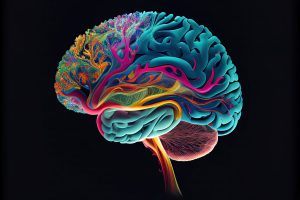Stress impacts behavior, well-being, and mental health, making it a crucial area of study. From self-reports to biometrics like cortisol levels and EEG, researchers now measure stress with precision. Explore how stress affects the brain and body, and the latest scientific methods for understanding it.
Table of Contents
How do we quantify something as subjective and variable as stress? While there is a general awareness of stress as a critical factor influencing behavior, well-being and both long- and short term mental health, the ways in which it can be measured and explained is of interest to researchers and medical professionals world-wide. This article delves into the multi-faceted nature of stress, provides a definition, how it can be measured, and its impact on human behavior.
The study of stress has evolved significantly over the years, from self-report questionnaires to measuring physiological markers such as cortisol levels, the methodologies are as diverse as they are sophisticated. Stress can influence most aspects of life, such as learning, cognitive functions, and overall mental health. In human behavior research, understanding and quantifying stress is pivotal, as it allows researchers to draw connections between physiological responses and behavioral outcomes, offering invaluable insights into human responses to stress.
Defining Stress in the Context of Human Behavior
What Exactly is Stress? Exploring its Dual Nature
Have you ever wondered what happens inside your body and mind when you’re stressed? Stress isn’t just a fleeting feeling of unease; it’s a complex interplay of your body’s neurological, physiological, and psychological responses. On a physiological and psychological level, it triggers the “fight or flight” response (Sapolsky, 2004) and creates a sense of strain and pressure, intricately linked with mental health (Lazarus & Folkman, 1984).
Neurologically, stress triggers a cascade of chemical and electrical responses in the brain. It stimulates the release of neurotransmitters like cortisol and adrenaline, affecting areas such as the amygdala (responsible for emotional processing) and the prefrontal cortex (involved in decision making and cognitive functions). Chronic stress can lead to neural adaptations that impact memory, mood, and behavior (McEwen, 2002).
Discovering the Types of Stress
Stress morphs into various forms, each affecting us differently:
- Acute Stress: This short-lived stress can be beneficial in small doses, like fueling you to meet that urgent deadline (McEwen, 2007).
- Chronic Stress: When stress lingers for long, it can take a toll on your health, arising from persistent life challenges (McEwen, 2002).
- Episodic Acute Stress: Some face frequent bouts of acute stress, often seen in those with a busy lifestyle or a tendency towards worry (Sapolsky, 2004).
The link between stress and behavior is not straightforward. Everyone experiences and reacts to stress differently, influenced by a mix of genetic, psychological, and environmental factors (Koolhaas et al., 2011). While a bit of stress can actually boost performance and drive (Yerkes & Dodson, 1908), being under too much stress for too long can lead to cognitive difficulties, anxiety, and depression (McEwen, 2002).
Measuring Stress – Tools and Techniques
Subjective Measures: Self-Report Scales and Questionnaires
Stress can be measured subjectively, based on individuals’ self-perceptions and reports of their stress levels and with the use of biometric tools. Self reports are invaluable for their insight into the personal experience of stress, but they rely heavily on the individual’s self-awareness and honesty. With the use of biometric devices, self-report tools can be used alongside physiological measures to provide a more rounded view of an individual’s stress levels.

Discovering Stress Levels Using Biometrics
How does your body say, “I’m stressed”? Beyond what we feel, there are hidden signs, and biometrics is the key to decoding them.
Cortisol Levels: The Body’s Stress Barometer
Think of cortisol as the body’s built-in stress alert system. Cortisol is a steroid hormone produced in the adrenal glands and plays a critical role in a range of vital processes in the body, including metabolism regulation, inflammation reduction, and control of the sleep-wake cycle. But it is perhaps best known for its role in the body’s response to stress. Whether in saliva, blood, or hair, changes in cortisol levels are like a stress gauge, offering real-time insights into how your body is handling pressure (Hellhammer, Wüst, & Kudielka, 2009).
Heart Rate Variability (HRV): Listening to the Heart’s Stress Story
HRV is an invaluable tool in stress research because it reflects how the body handles stress. A lower HRV indicates less variability between heartbeats and is typically associated with higher stress levels, poor cardiovascular health, or reduced autonomic nervous system resilience. Conversely, a higher HRV suggests a more resilient system that can efficiently manage stress. This makes HRV a vital indicator of physiological resilience and the regulatory capacity of the nervous system. (Thayer, Åhs, Fredrikson, Sollers, & Wager, 2012).

Galvanic Skin Response (GSR): Stress Revealed Through Skin
Skin conductivity changes under stress, thanks to increased sweat gland activity. GSR taps into this phenomenon, providing an immediate window into your stress levels. GSR assesses changes in the skin’s ability to conduct electricity, which varies with the activity of the sweat glands in the skin. These glands are controlled by the sympathetic nervous system, which is directly activated by emotional states such as stress, excitement, or fear. By measuring how the skin’s electrical properties change in response to stress, GSR offers insights into the autonomic processes that accompany psychological phenomena, thereby playing a crucial role in both research and practical applications of stress management.
Electroencephalogram (EEG): Mapping the Brain’s Response to Stress
By placing electrodes on the scalp, EEG captures fluctuations in brain wave patterns, offering insights into the brain’s dynamic state under various psychological conditions, including stress. EEG provides a peek into your brain’s electrical activity, revealing how stress alters your mental state and cognitive processes. EEG can reveal how stress affects cognitive load by observing changes in brain wave patterns. For instance, increased beta activity under stress may indicate a higher cognitive load, affecting decision-making and problem-solving abilities.
How Stress Rewires Our Brain
The brain doesn’t just ‘feel’ stress; it undergoes physical changes.
Under stress, the amygdala, our emotional response center, becomes hyperactive. This can lead to heightened feelings of anxiety and fear, almost like having an over-sensitive alarm system in your brain (LeDoux, 2007). Meanwhile, stress also causes disruptions in the hippocampus. Think of the hippocampus as your memory vault. Chronic stress can cause this vital area to shrink, impacting how memories are formed and retrieved. This explains why high stress might make learning and remembering tougher (McEwen, 2000). The decision making part of your brain, the prefrontal cortex, is also affected by stress, which is why decision-making and problem-solving skills can take a hit when under stress (Arnsten, 2009).
Conclusion
Understanding stress is not just about coping with everyday challenges but instead its about understanding a complex phenomenon that influences our thoughts, behaviors, and well-being. There are cutting-edge ways to measure stress, especially through the lens of biometrics. These scientific breakthroughs, from monitoring cortisol levels to analyzing heartbeats, aren’t just about numbers and data; they’re about understanding the language of our body under stress.
The insights into how stress affects our brain opens doors to better management strategies, particularly crucial in high-stress environments. This scientific progression in understanding and managing stress not only enhances knowledge but also equips the field with precise tools for addressing stress. The future of stress management looks toward not only alleviating stress with general strategies but also approaching it with a precision that is both personalized and scientifically grounded, fostering a healthier, more balanced society.
References
- Sapolsky, R. M. (2004). Why Zebras Don’t Get Ulcers. Henry Holt and Company.
- Lazarus, R. S., & Folkman, S. (1984). Stress, Appraisal, and Coping. Springer Publishing Company.
- McEwen, B. S. (2002). The End of Stress As We Know It. National Academies Press.
- McEwen, B. S. (2007). Physiology and Neurobiology of Stress and Adaptation: Central Role of the Brain. Physiological Reviews.
- Yerkes, R. M., & Dodson, J. D. (1908). The relation of strength of stimulus to rapidity of habit-formation. Journal of Comparative Neurology and Psychology.
- Koolhaas, J. M., et al. (2011). Stress revisited: A critical evaluation of the stress concept. Neuroscience & Biobehavioral Reviews.
- Cannon, W. B. (1915). Bodily Changes in Pain, Hunger, Fear and Rage. Appleton-Century-Crofts.
- Selye, H. (1950). Stress and the General Adaptation Syndrome. British Medical Journal.
- Cohen, S., Kamarck, T., & Mermelstein, R. (1983). A Global Measure of Perceived Stress. Journal of Health and Social Behavior.
- Peacock, E. J., & Wong, P. T. P. (1990). The Stress Appraisal Measure (SAM): A Multidimensional Approach. Journal of Psychopathology and Behavioral Assessment.
- Hellhammer, D. H., Wüst, S., & Kudielka, B. M. (2009). Salivary Cortisol as a Biomarker in Stress Research. Psychoneuroendocrinology.
- Thayer, J. F., Åhs, F., Fredrikson, M., Sollers, J. J., & Wager, T. D. (2012). A Meta-Analysis of Heart Rate Variability and Neuroimaging Studies: Implications for Heart Rate Variability as a Marker of Stress and Health. Neuroscience & Biobehavioral Reviews.
- LeDoux, J. (2007). The amygdala. Current Biology.
- McEwen, B. S. (2000). Effects of Adverse Experiences for Brain Structure and Function. Biological Psychiatry.
- Arnsten, A. F. T. (2009). Stress signalling pathways that impair prefrontal cortex structure and function. Nature Reviews Neuroscience.
- Tang, Y. Y., et al. (2015). The neuroscience of mindfulness meditation. Nature Reviews Neuroscience.
- Hellhammer, D. H., Wüst, S., & Kudielka, B. M. (2009). Salivary Cortisol as a Biomarker in Stress Research. Psychoneuroendocrinology.
- Thayer, J. F., Åhs, F., Fredrikson, M., Sollers, J. J., & Wager, T. D. (2012). A Meta-Analysis of Heart Rate Variability and Neuroimaging Studies: Implications for Heart Rate Variability as a Marker of Stress and Health. Neuroscience & Biobehavioral Reviews.










